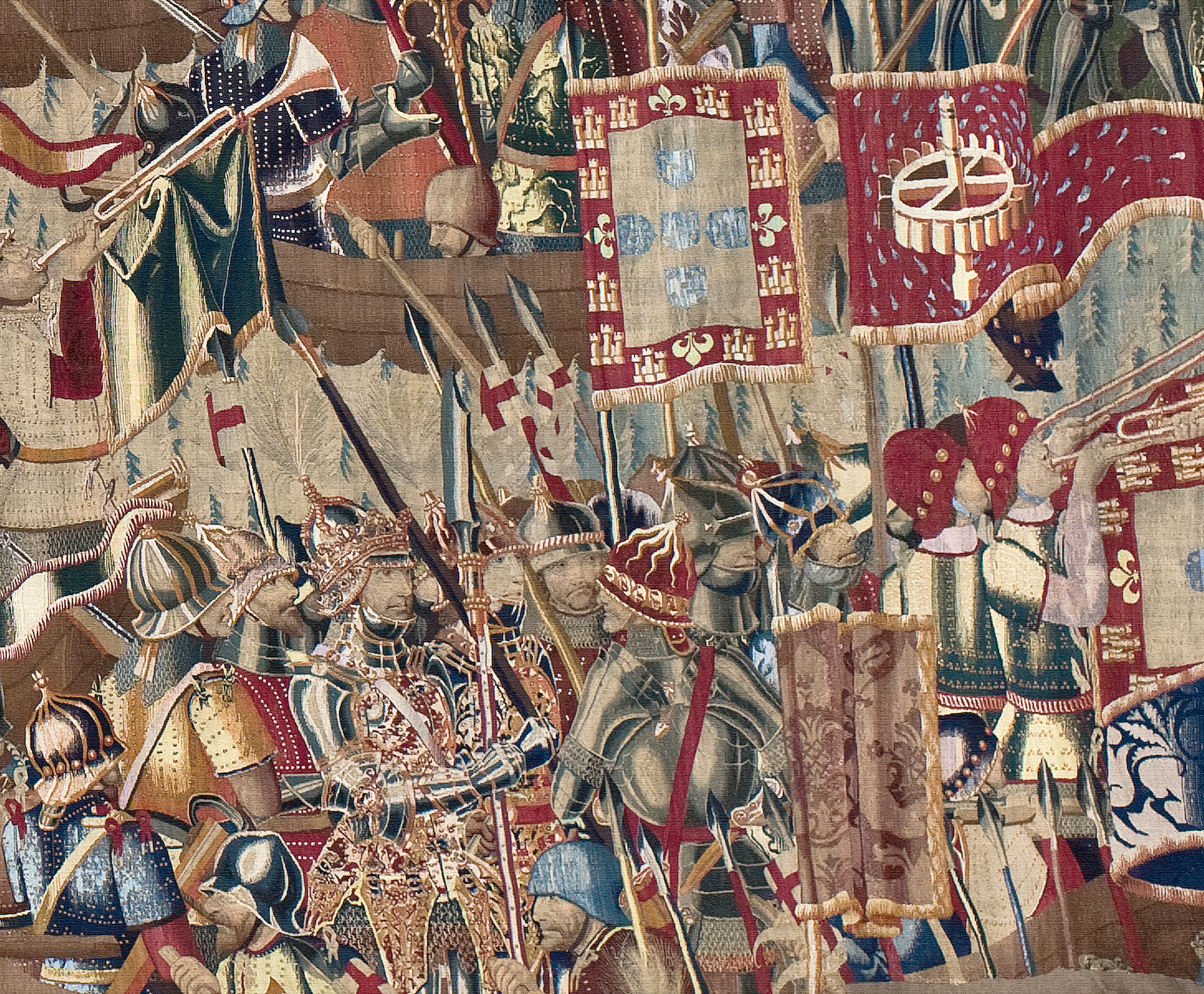 In August 1471, eager to secure control of the strategically important Moroccan cities at the entrance to the Straits of Gibraltar, King of Portugal Afonso V attacked the coastal walled city of Asilah. Asilah fell, followed two days later by Tangier which was handed over to the Portuguese by the governor of Asilah. The conquest of Tangier would give Portugal control over maritime traffic between the Mediterranean and Atlantic until 1661, and on a personal note, gave King Afonso the satisfaction of succeeding where his kingly uncles had failed.
In August 1471, eager to secure control of the strategically important Moroccan cities at the entrance to the Straits of Gibraltar, King of Portugal Afonso V attacked the coastal walled city of Asilah. Asilah fell, followed two days later by Tangier which was handed over to the Portuguese by the governor of Asilah. The conquest of Tangier would give Portugal control over maritime traffic between the Mediterranean and Atlantic until 1661, and on a personal note, gave King Afonso the satisfaction of succeeding where his kingly uncles had failed.
It also earned him brownie points with the Church, which had been actively encouraging colonialist crusades since Pope Nicholas V’s 1452 bull Dum Diversas first exhorted the kings of Spain and Portugal to “invade, search out, capture, and subjugate the Saracens and pagans and any other unbelievers and enemies of Christ wherever they may be, as well as their kingdoms, duchies, counties, principalities, and other property […] and to reduce their persons into perpetual slavery.”
To commemorate these glorious victories, four monumental tapestries, each measuring 12 by 36 feet, were commissioned from Flemish weavers in Tournai, Belgium. Begun just a few years after the battles, Landing at Asilah, Siege of Asilah, Assault on Asilah and The Conquest of Tangier were woven from the finest wool and silk and depict the Portuguese conquest as the epitome of chivalric heroism.
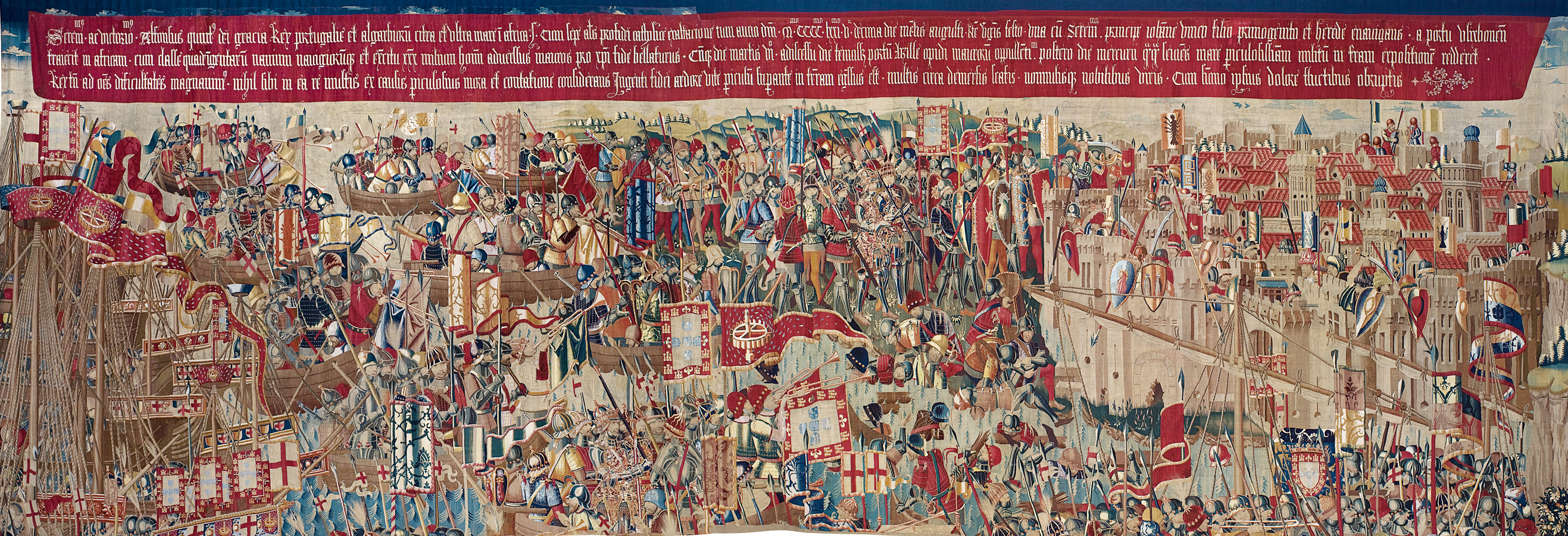
Probably produced under the direction of Passchier Grenier, tapestry merchant, Tournai (Belgium), 1470s, Landing at Asilah, 1475-1500, wool and silk, 144-7/8 x 436-1/4 in., Diocese of Sigüenza-Guadalajara and Church of Our Lady of the Assumption, Pastrana, Spain. © Fundación Carlos de Amberes. Photograph by Paul M.R. Maeyaert.
Their advanced age, immense size, intense colors and riot of details would make these tapestries rare and marvelous by any standard, but they are also some of the earliest tapestries to depict a contemporary event instead of the allegorical, mythological and religious subjects covered by the vast majority of Gothic tapestry.
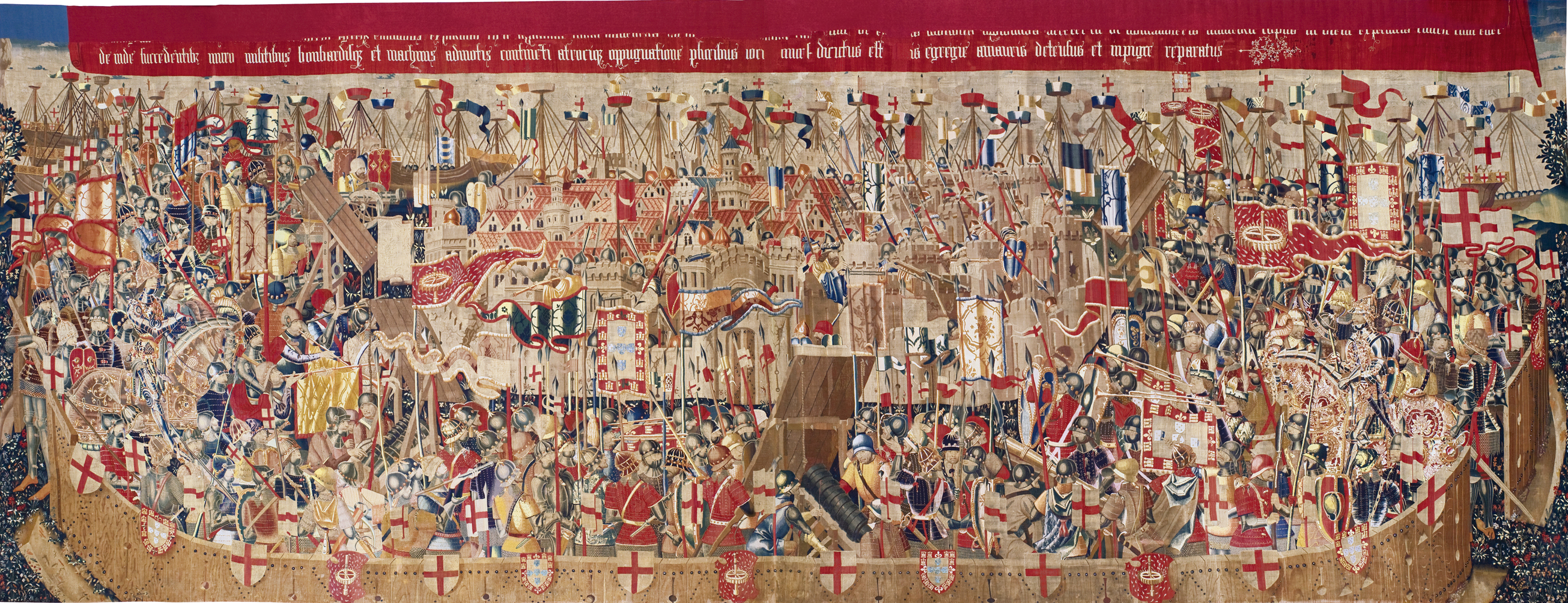
Probably produced under the direction of Passchier Grenier, tapestry merchant, Tournai (Belgium), 1470s, Siege of Asilah, 1475-1500, wool and silk, 168-1/2 x 424-7/16 in., Diocese of Sigüenza-Guadalajara and Church of Our Lady of the Assumption, Pastrana, Spain. © Fundación Carlos de Amberes. Photograph by Paul M.R. Maeyaert.
The Flemish weavers, amazing geniuses though they obviously were, weren’t so clear on what North African cities and people looked like, so Asilah and Tangier look remarkably like North European cities, complete with flora that are characteristic filler material in Tournai weavings. They were familiar with the Portuguese, however, so Afonso’s forces are depicted in accurate detail, leaving us an incredibly rare encyclopedic visual record of 15th century military regalia.

Probably produced under the direction of Passchier Grenier, tapestry merchant, Tournai (Belgium), 1470s, Assault on Asilah, 1475-1500, wool and silk, 145-1/4 x 432-11/16 in., Diocese of Sigüenza-Guadalajara and Church of Our Lady of the Assumption, Pastrana, Spain. © Fundación Carlos de Amberes. Photograph by Paul M.R. Maeyaert.
All of this beauty might have been lost along with so many other Portuguese treasures during the 1755 Lisbon earthquake and the tsunami and fires that devastated the area in its aftermath. What saved the Pastrana tapestries is what gives them their name: by the time of the earthquake, the tapestries were kept in a parish church in Pastrana, Spain. We don’t know exactly how they got there, but one prominent theory is that they were given to Philip II of Spain in the late 16th century during the period of Iberian Union, when the kingdoms of Spain and Portugal were joined under Philip’s sole rule.
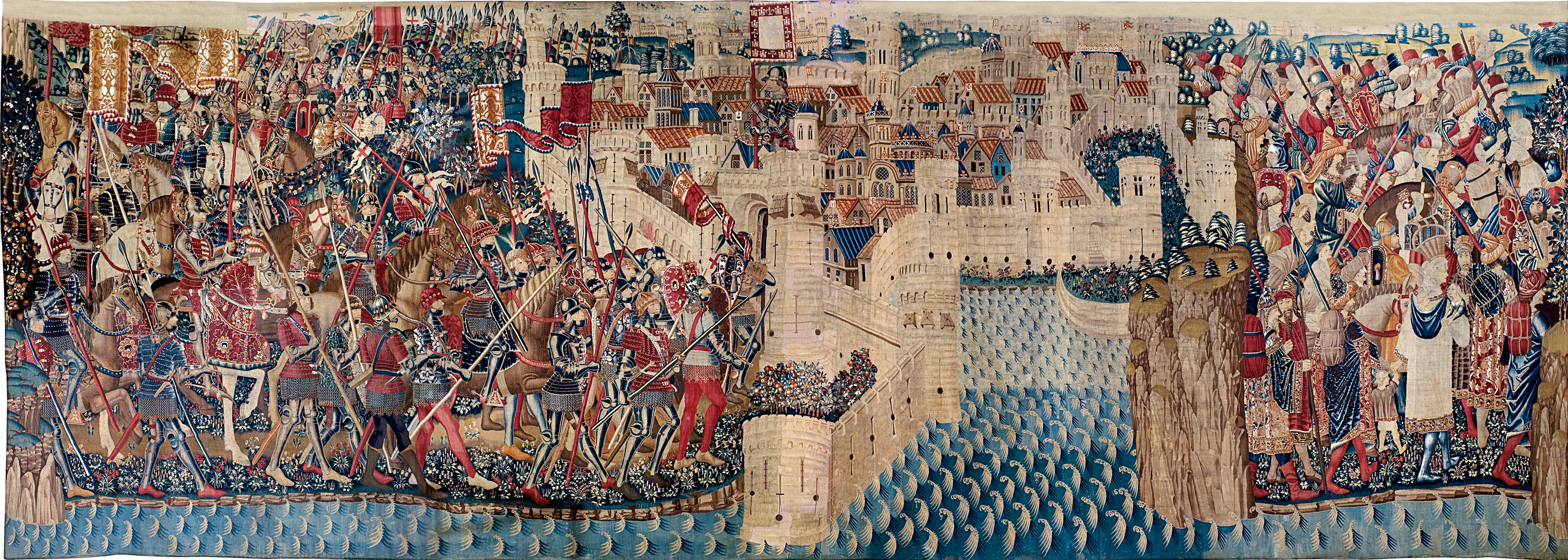 Probably produced under the direction of Passchier Grenier, tapestry merchant, Tournai (Belgium), 1470s, The Conquest of Tangier, 1475-1500, wool and silk, 157-1/2 x 426 in., Diocese of Sigüenza-Guadalajara and Church of Our Lady of the Assumption, Pastrana, Spain. © Fundación Carlos de Amberes. Photograph by Paul M.R. Maeyaert.
Probably produced under the direction of Passchier Grenier, tapestry merchant, Tournai (Belgium), 1470s, The Conquest of Tangier, 1475-1500, wool and silk, 157-1/2 x 426 in., Diocese of Sigüenza-Guadalajara and Church of Our Lady of the Assumption, Pastrana, Spain. © Fundación Carlos de Amberes. Photograph by Paul M.R. Maeyaert.
In the remote Church of Our Lady of the Assumption at Pastrana, the tapestries remained safe for centuries. They were only removed briefly during the Spanish Civil War to keep them from danger. Still, after hundreds of years, the tapestries were caked with dirt, snacked on by moths, faded from light damage and from the natural deterioration of the dyes. In 2008, a number of organizations worked together with the Fundación Carlos de Amberes to raise money for a complete conservation of the tapestries.
 All four tapestries were sent to Belgium, their land of origin, to be conserved by the experts at the Royal Manufacturers De Wit in Mechlin. By all accounts they did a stupendous job. The conservation of the tapestries received a 2011 Europa Nostra Award.
All four tapestries were sent to Belgium, their land of origin, to be conserved by the experts at the Royal Manufacturers De Wit in Mechlin. By all accounts they did a stupendous job. The conservation of the tapestries received a 2011 Europa Nostra Award.
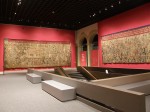 Thus restored to their former splendor, the tapestries have been traveling since 2010. Brussels, Lisbon, Toledo and Madrid got to see them first; then they went overseas to the United States. The exhibit, The Invention of Glory: Afonso V and the Pastrana Tapestries, first stopped at the National Gallery of Art in Washington, D.C. from September 18, 2011 through January 8, 2012. The tapestries are now at the Meadows Museum in Dallas until May 13, 2012. Then they move on to the San Diego Museum of Art from June 10 to September 9, and lastly to the Indianapolis Museum of Art from October 5 to January 6, 2013.
Thus restored to their former splendor, the tapestries have been traveling since 2010. Brussels, Lisbon, Toledo and Madrid got to see them first; then they went overseas to the United States. The exhibit, The Invention of Glory: Afonso V and the Pastrana Tapestries, first stopped at the National Gallery of Art in Washington, D.C. from September 18, 2011 through January 8, 2012. The tapestries are now at the Meadows Museum in Dallas until May 13, 2012. Then they move on to the San Diego Museum of Art from June 10 to September 9, and lastly to the Indianapolis Museum of Art from October 5 to January 6, 2013.
The National Gallery of Art website has a pdf version of the exhibition wall panels which explain the overall action in each tapestry and pull out some salient details.